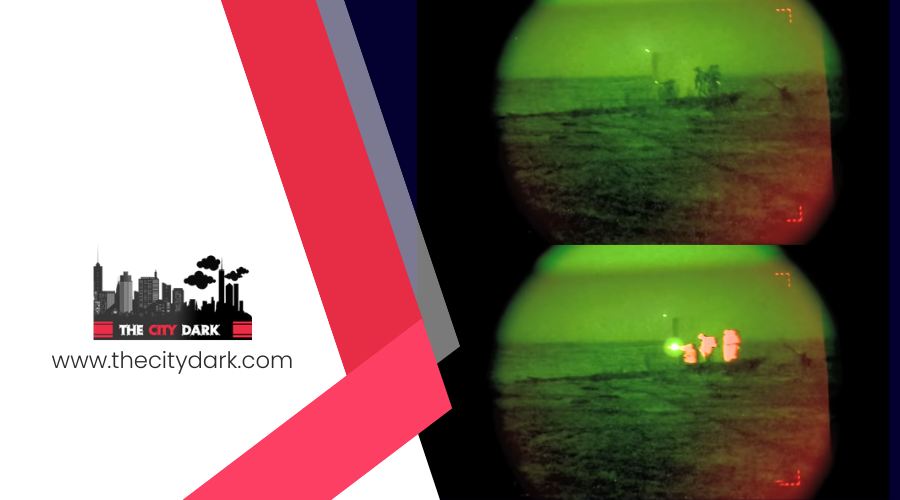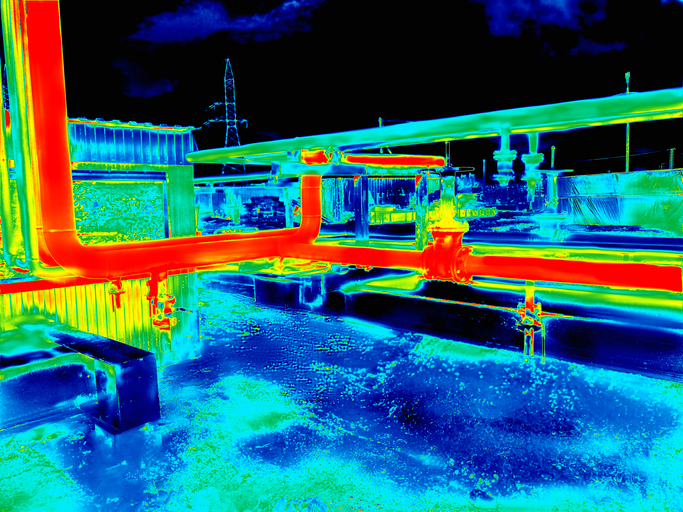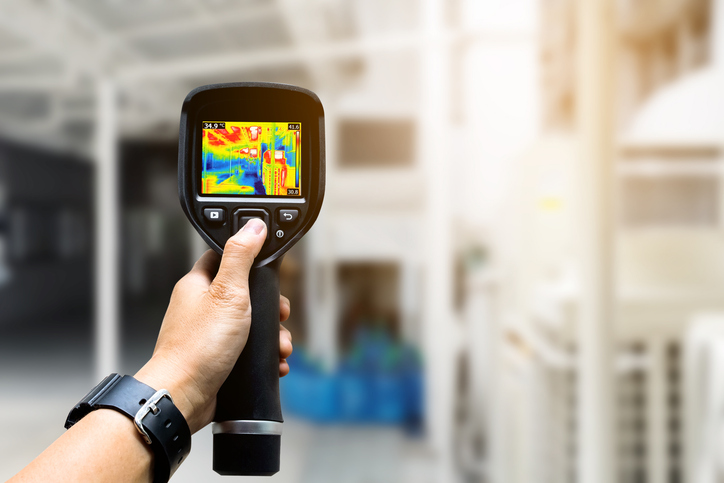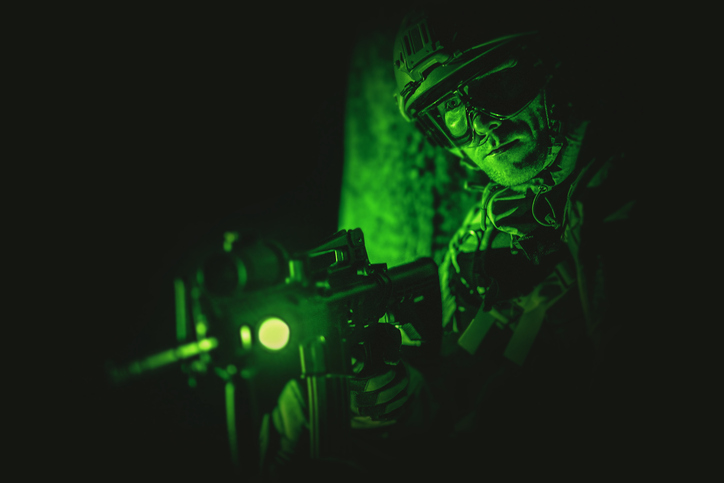From the early infrared systems of World War II, which let you see heat in the dark, to today’s advanced digital night vision, your journey has been long. What started as bulky has become compact thermal imaging tools. Now, imagine night vision that boosts faint light 50,000 times, offering a clear, green view. Moving forward, thermal imaging has evolved to showcase precise heat patterns, all thanks to digital progress. Each step, from enhancing ambient light to using gallium arsenide photocathodes, has improved clarity. Today, digital night vision changes how you navigate, communicate, and collect information in the dark. Discover how these advancements turned night into an advantage.
Key Takeaways
- In World War II, they started with early infrared systems, which grew into handheld thermal imagers.
- Image intensification made faint light much brighter, up to 50,000 times, showing pictures in green for clearer contrast.
- Thermal tech let us see in pitch dark by catching heat from objects.
- Progress moved from first-gen light boosters to third-gen with better clarity using gallium arsenide.
- The digital night vision shift, pushed by brands like SIONYX, merged high-tech imaging into one system, turning night into an edge.
Early Infrared Viewing Systems
During World War II, the dawn of infrared viewing systems changed military reconnaissance. These systems turned night into a detectable landscape of heat signatures. They let soldiers see the enemy in the dark, a significant edge in war.
The first versions of these devices were large, not the portable units we see today. They needed to be set up on vehicles or posts to watch over enemy lines. Despite their bulk, they shifted how wars were fought, highlighting the role of technology.
As time went on, these systems improved. They shrank in size and grew in efficiency, leading to today’s thermal imaging technology. These early systems set the stage for the night vision tools we rely on now, in both military and civilian life, turning night into day.
Image Intensification Breakthroughs
A vital leap in night vision tech, image intensification, has changed night sight. It boosts faint light to new levels. This advance relies on processes that increase light, making unseen things seen. Now, the night shines in a unique green, improving how you move and work in dim light.
Green was chosen for a reason. It’s easy on your eyes, offering clear contrast with less strain over time. Looking through such a device, you see light—like from stars or the moon—boosted more than 50,000 times. This huge step means even in pitch dark, you see better.
Thermal Imaging Evolution
You’ve seen night vision grow, especially with image intensification. Now, look at thermal imaging. It moved from old detection to modern digital improvements. This change greatly improved how we see the world without light, bringing new insights and uses.
Early Thermal Detection
The early thermal detection technology, born from the skill to capture heat that every object gives off, changed how we see in complete darkness. Unlike the old night vision that needed some light, this new way uses the part of light we can’t see to make pictures. This big step meant we could now spot humans, animals, and even plants in the darkest places, like deep caves or thick woods, with no light at all. The idea behind it is simple but deep: everything gives off a heat signal that this technology can catch. This opened new doors for moving around at night, watching wildlife, and keeping an eye on things, changing how we act in the dark.
Modern Digital Enhancements
Building on the simple beginnings of thermal detection, the addition of modern digital technology has significantly improved thermal imaging. These improvements have changed how we see in darkness. Now, you can see what was once hidden, uncovering the night’s secrets with clear and precise images.
- Feel the excitement as digital enhancements illuminate the dark, revealing detailed heat patterns.
- Experience the thrill of seeing clearly in darkness, making what was invisible visible.
- Marvel at the clarity of high-resolution images that capture what was once unseen.
- Appreciate the safety as better identification and tracking ensure nothing is missed.
With each advancement, thermal imaging turns night into day, giving us a clear view of the world hidden in darkness.
Generation-Based Development
As you delve into the evolution of night vision technology, observe how each generation signifies a major leap in capability and performance. Starting from the early innovations of the first generation to the advancements of the third, the journey showcases perpetual improvement. Notice how each stage’s enhancements have contributed to the dependable and high-performing devices we use today.
First Generation Innovations
The first-generation night vision technology brought a significant leap forward in seeing in the dark, using passive infrared to make ambient light up to 1,000 times brighter. With the arrival of Generation 1 devices, the future of nighttime operations was reshaped by making images clearer and brighter. These devices delivered sharper images and better visibility, changing how the world looks without light.
- Saw what was hidden in almost complete darkness.
- Noticed more details and clearer images on night adventures.
- Got a strategic advantage in dim conditions.
- Admired how ambient light was made brighter.
Generation 1 began a new chapter, turning night into as bright as day with just a switch.
Second Generation Enhancements
Transitioning from the initial breakthroughs of first-generation night vision, the advent of second-generation enhancements marked a significant leap forward in nocturnal vision capabilities. These advancements introduced micro-channel plate-equipped image-intensifier tubes, a critical component for achieving brighter visuals in dim conditions. This evolution was not merely a step forward; it represented a revolution in the realm of night vision.
Light amplification escalated dramatically, up to 20,000 times, delivering unmatched clarity and reliability that surpassed the capabilities of first-generation systems. The integration of superior optics and supergen tubes led to an improvement in performance, notably in signal-to-noise ratios and image quality. Second-generation night vision systems indeed signified a crucial turning point, laying the groundwork for further innovations and ushering in an era of more refined night vision technology.
Third Generation Breakthroughs
Leveraging advancements from its predecessors, the third generation of night vision technology has introduced gallium arsenide photocathodes, significantly elevating image resolution. This advancement is not merely an improvement; it’s akin to experiencing the nocturnal world anew.
- Gallium arsenide photocathodes bring unparalleled clarity, transforming night into a vivid tableau.
- With the ability to amplify light up to 50,000 times, the darkest explorations become illuminated ventures.
- A protective film ensures the longevity of your equipment, emphasizing the value of every moment captured.
- While there might be a slight increase in electronic noise, the substantial enhancement in image quality and dependability redefines nighttime adventures.
This third generation heralds a transformative era in nocturnal observation, revolutionizing our interaction with the world in the hours shrouded in darkness.
Laser Night Vision Advancements
In the recent years, laser night vision has changed the game. Now, you can see in the dark as if it were daylight. This magic comes from infrared light. It lights up objects in darkness, making them visible.
These systems send infrared light out and it bounces back. This gives you a clear picture of what’s around you. It’s a big step forward. Now, military missions in the dark are more effective. Soldiers can see clearly, making their jobs safer and more efficient.
But, you must be careful. The same infrared light that helps you can also give you away. The enemy can detect it. So, you must use it wisely. Still, the advantages of laser night vision are huge. It’s become essential in military work and surveillance, making operations at night or in low light much better.
Airborne Night Vision Innovations
After delving into the progress of laser night vision, let’s now focus on the transformation night vision tech has brought to the skies. Night vision sensors on planes are now essential for night missions, helping pilots see in the dark and conduct surveillance. These systems are fixed to a stable gimbal to ensure images stay sharp, even as the aircraft moves.
The arrival of airborne night vision has significantly boosted both military and civilian flying. Pilots can spot targets and navigate the night with unmatched accuracy. Sensors under the plane are key in taking pictures of the ground, enhancing awareness in the dark.
Think about these changes:
- Picture flying at night, the land below visible as if in daylight.
- Experience the assurance of carrying out surveillance or rescue in darkness.
- Imagine seeing threats or objectives from a distance, unseen.
- Consider how night flight safety has improved, lowering accident risks.
With these developments, airborne night vision has reshaped night operations, broadening the possibilities for exploration and safety.
Digital Night Vision Revolution
The digital night vision revolution has changed the game for soldiers, making them more aware and effective. This technology leap makes soldiers powerful gatherers of intelligence and changes how battles are fought. With digital night vision, soldiers do more than see in the dark; they are part of a network that shares information, improves coordination, and enhances mobility and communication.
Companies like SIONYX lead in advancing digital night vision for the military. Their technology changes how command and control work, making soldiers key parts of a bigger strategy. This boosts the effectiveness and safety of their units.
This revolution is not just about better vision; it’s about making each soldier more capable by integrating advanced imaging into a unified system. The digital night vision revolution turns night into a time of tactical opportunity, keeping those with the latest technology ahead.
Conclusion
You’ve traveled through the incredible growth of night vision technology, starting with the basic infrared systems to today’s advanced digital night vision. You’ve seen key advances in making images clearer, improvements in seeing heat, and developments across generations. Laser and airborne progress have broadened what’s possible, leading to the digital night vision era that brings unmatched sharpness and performance in complete darkness.




